Whether you’re after something deep and meaningful or just want to dip your toe in, here’s how to bring water into your outdoor space with water features
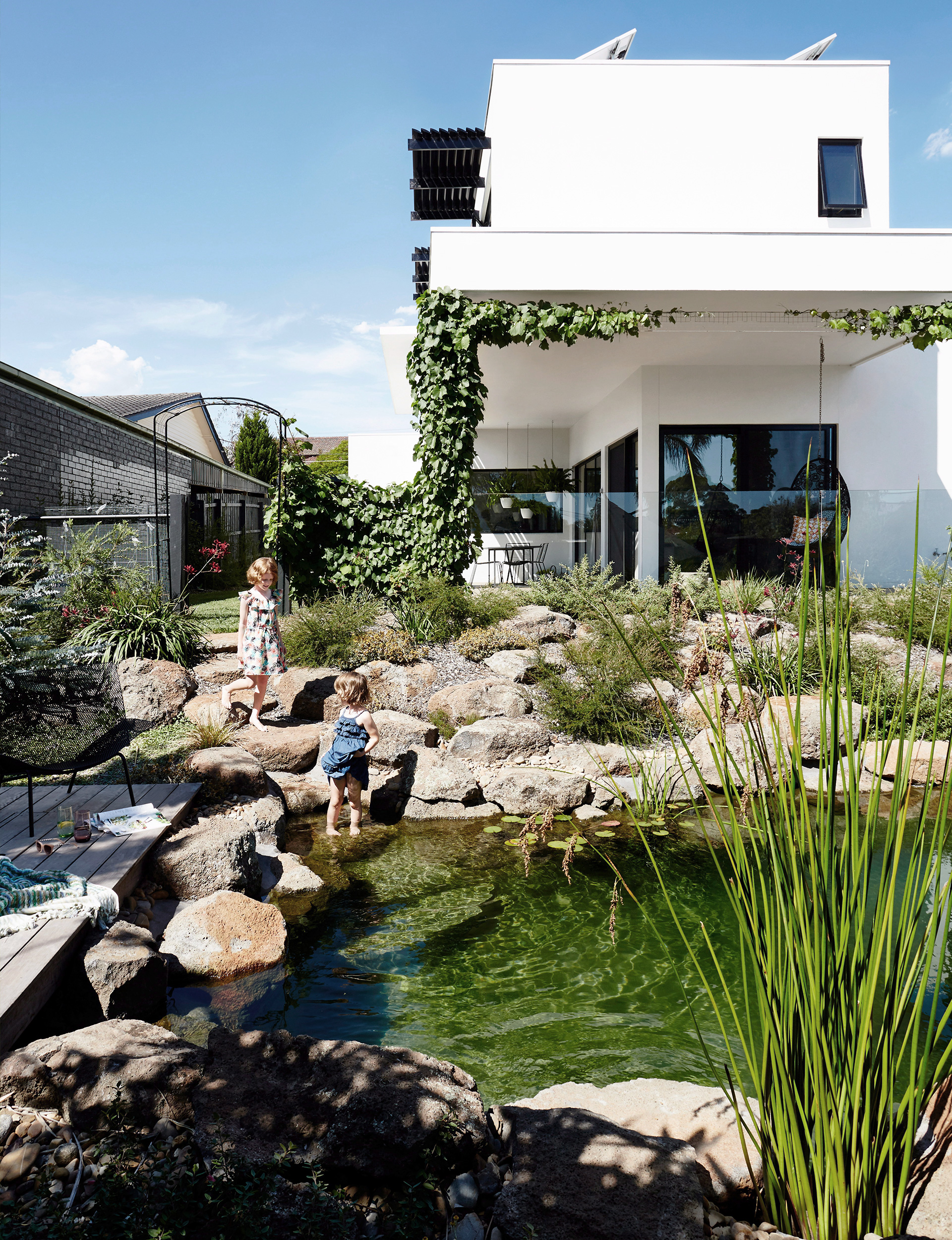
In the heat of summer, there’s nothing quite like relaxing in the garden beside a swimming pool or a gently trickling fountain. Although swimming pools are not in everyone’s budget, some form of water feature is within most people’s reach. From a few aquatic plants in a simple water bowl on the deck, to an in-ground pond complete with fish and a fountain, the possibilities are endless. Many water features can be easily built with basic DIY skills, too. Always check out the maintenance requirements before you commit to such projects, though, as water gardens can deteriorate quickly without regular TLC.
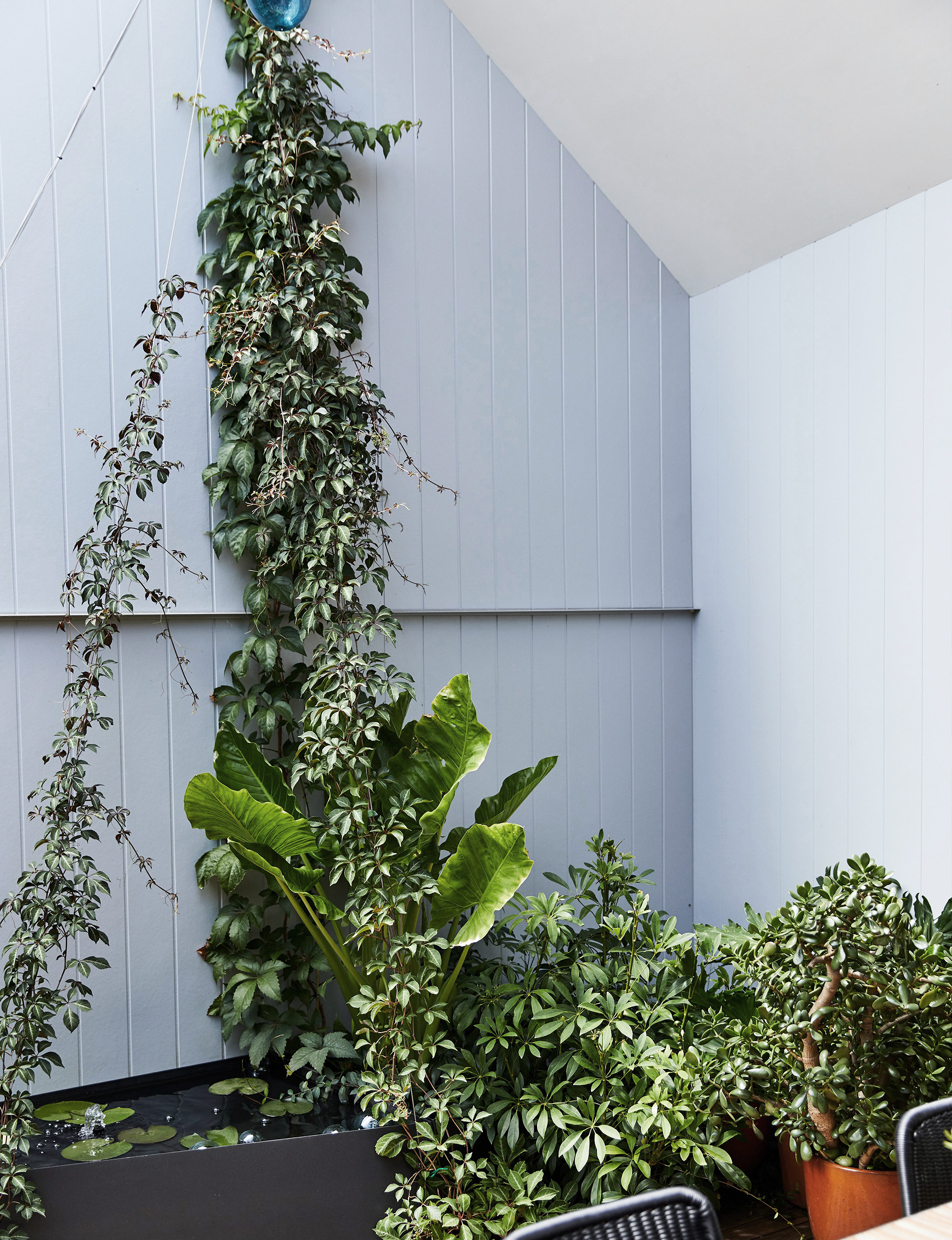
Start small
It’s a good idea to start small when experimenting with water gardens so you can determine what level of maintenance you are prepared to carry out. If you’re not a keen gardener then you may not relish the idea of draining ponds, cleaning filters and so forth.
A simple fountain in a pot may be just the ticket or perhaps your space would suit a container water garden with some miniature waterlilies positioned at eye level on a low table. For a magical effect with virtually no effort, you could try filling a beautiful bowl to the brim with water and floating some flowers in it. These options are ideal for those living in apartments or places with tiny outdoor areas.
Choose the right space for your water feature
Unlike garden beds, ponds and other water elements are not easily changed or moved. Think carefully about where you position such features, making sure you maximise their effect – you might like a simple rectangular pond close to the front entrance, for instance, or a raised water trough and fountain alongside an outdoor entertaining area to create a soothing backdrop to gatherings. Do you want to see it from inside the house? From upstairs, too? Should it be at eye level or in the ground?
For best plant growth, avoid shady areas, particularly under trees as roots can crack concrete ponds, and leaves or berries turn water green, making it toxic to fish. Leaf litter can also be an issue in windy locations as can increased water evaporation.
Choose a level area for in-ground ponds and don’t position them in low spots or areas that accumulate run-off. Ideally find a location that has easy access to power and fresh water.
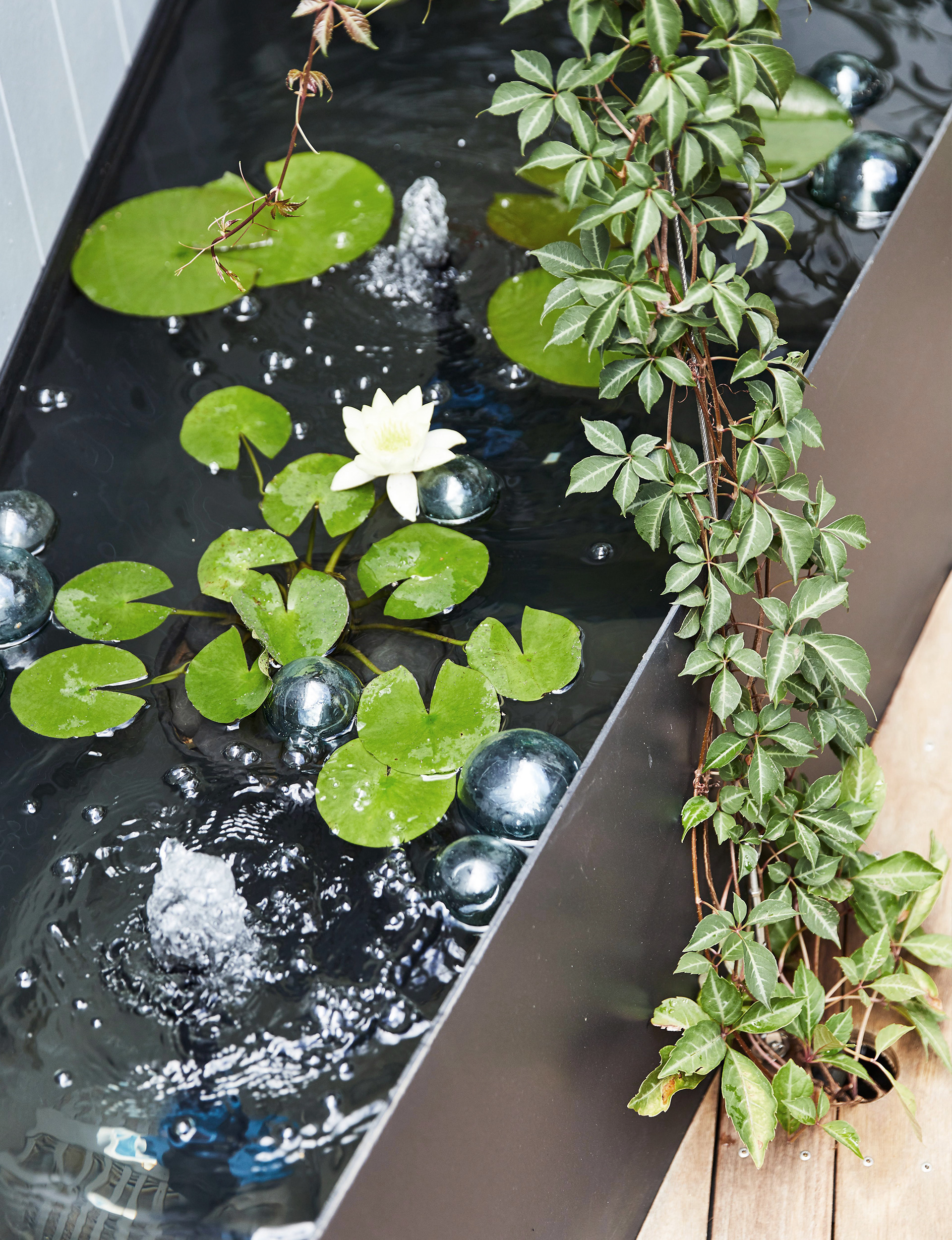
Ponds
Ponds can add vibrant life to a garden with their beautiful reflections and surface movement in the rain and wind. Plants and fish bring more colour and interest – as do the wild birds, bees and other insects that will soon discover your pond. Place a large rock in the water or create a ledge for these creatures to bathe and drink.
Always do your research or consult an experienced local contractor before building an in-ground pond. Most naturalistic ponds have sloped sides with terraces for planting at different levels, or you can position bricks for this purpose. Liners for both natural-looking or geometric ponds can be made of concrete, brick or even clay, but most people now use pre-formed liners made from fibreglass or plastic or flexible liners made from PVC or butyl rubber.
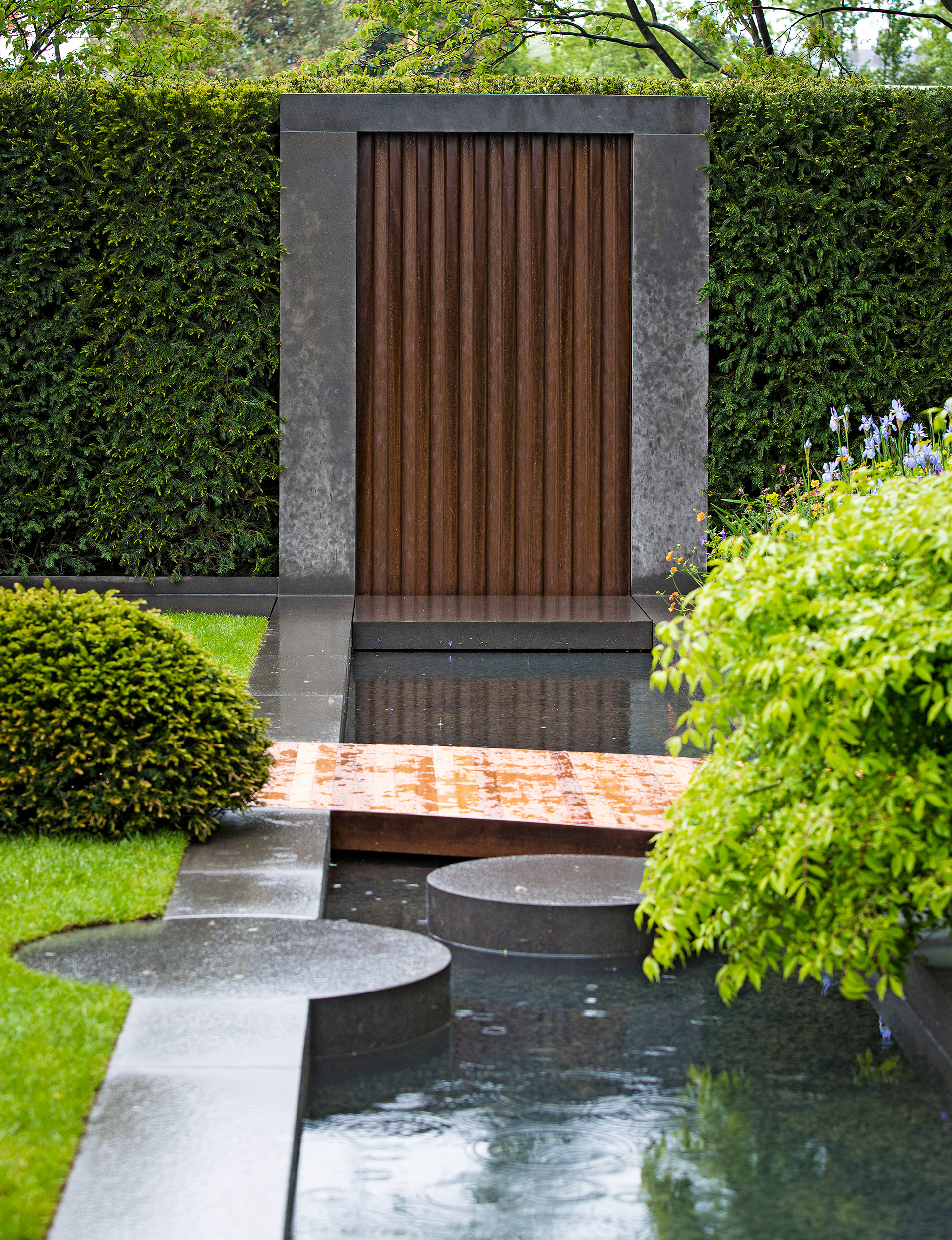
Moving water
Moving water has a dynamic quality that adds even more vitality to gardens. Obviously, you need pumps to move water, and their size will depend on the volume you want to move and the height it will fall. Check with an aquatic-supply company on the right pump for you. Remember that moving water can be noisy so you may need to adjust the pump or baffle the sound a little by placing something just below the surface of the water where it falls.
In colder areas where water can freeze, pumps may need to be turned off during winter. To avoid the need for an electrician to connect your pump to your mains power supply, opt for a 12-volt pump or consider one of the many solar-powered pumps now on the market.
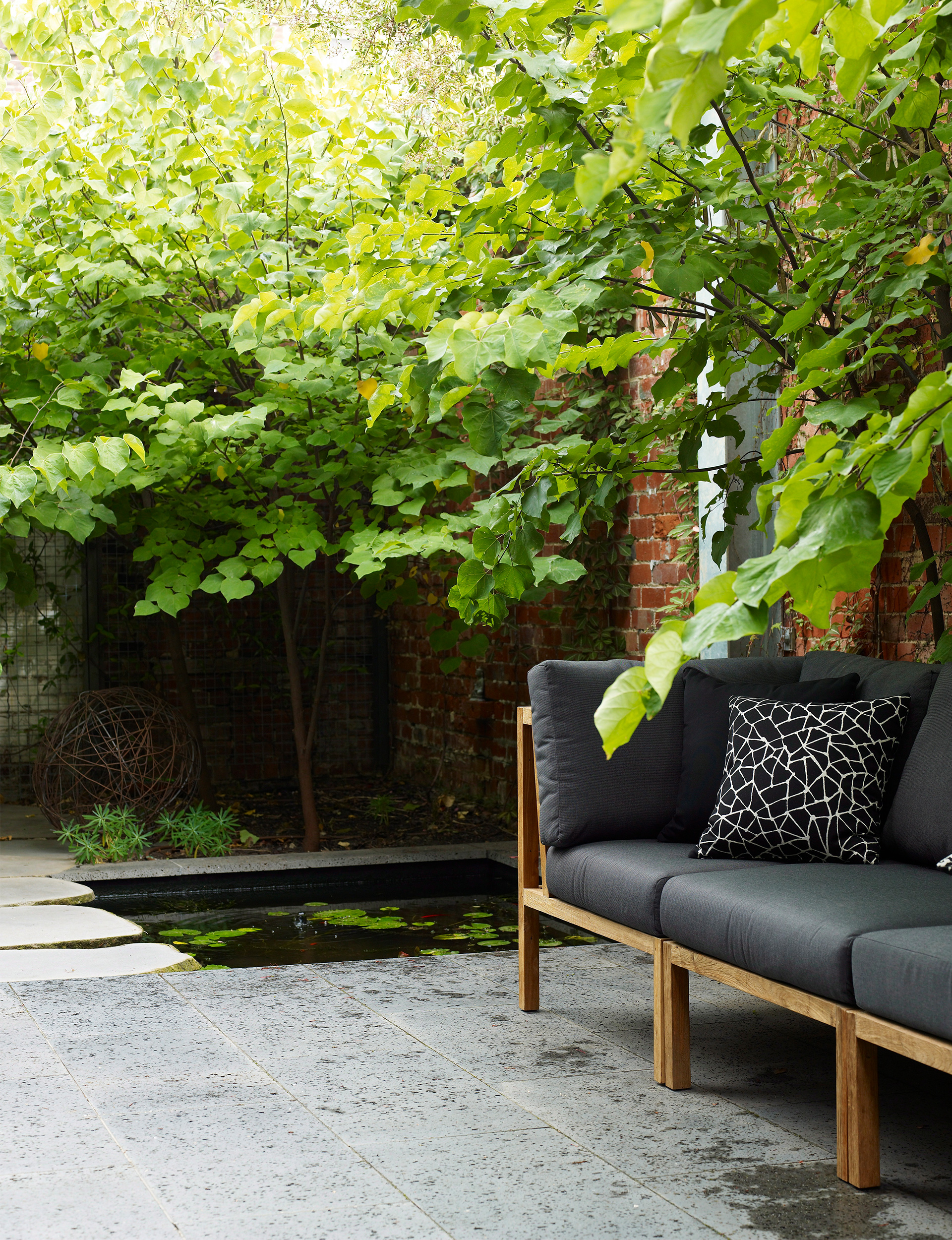
Water plants
There are three main types of water plants: floating plants such as water lilies and lotus which shade the water; bog or marginal plants such as iris and pickerel weed which grow on the edge of the water with their roots in wet soil; and submerged plants, also known as oxygenating plants, which help keep the water clear and algae-free by absorbing dissolved nutrients. Submerged plants such as our native milfoil also provide protection for fish.
Waterlilies can be hardy or tropical – the former producing flowers that sit on the surface of the water, the latter holding blooms above it. Hardy waterlilies can survive in cold temperatures as long as their roots don’t freeze solid. Tropicals, many of them perfumed, need full sun and water temperatures above 21°C to bloom well. If you’re using a container water garden, choose a miniature variety.
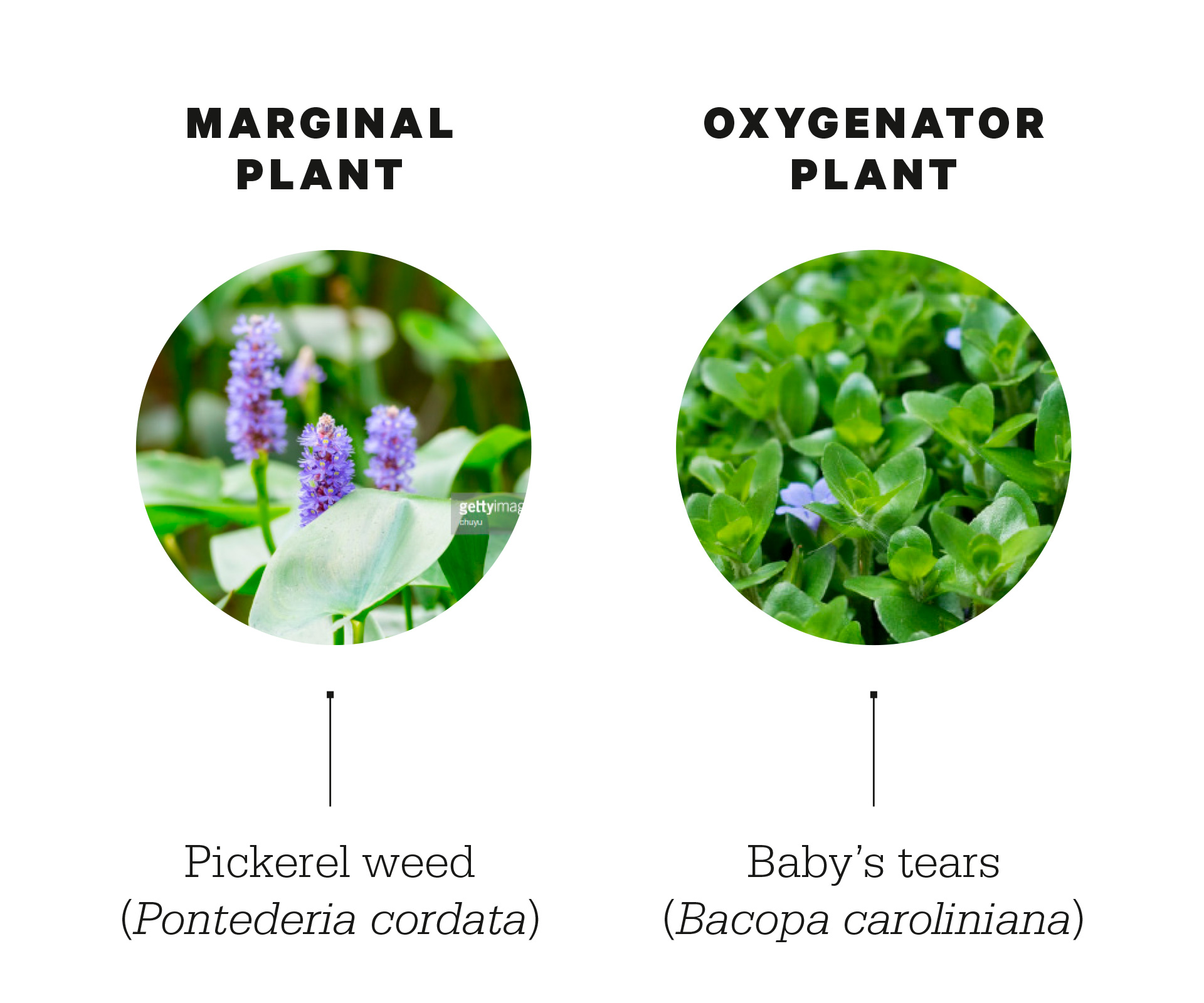
Most water plants, apart from those in very large ponds, are grown in special perforated pots that allow water to penetrate and keep roots from spreading. Pots also allow you to feed the plants easily, an essential task if you want waterlilies to flower well.
While it’s important to keep a reasonable percentage of a pond’s surface shaded to prevent algae build-up, try not to overplant it, so you can still enjoy its reflective qualities.
For those who only want a small amount of water:
Sculptures – from small fountains to bubbling water bowls – are an effective way to add a watery element without too much commitment. Birdbaths are a classic feature and similarly low-maintenance, with the added pull of bringing wildlife into your garden.
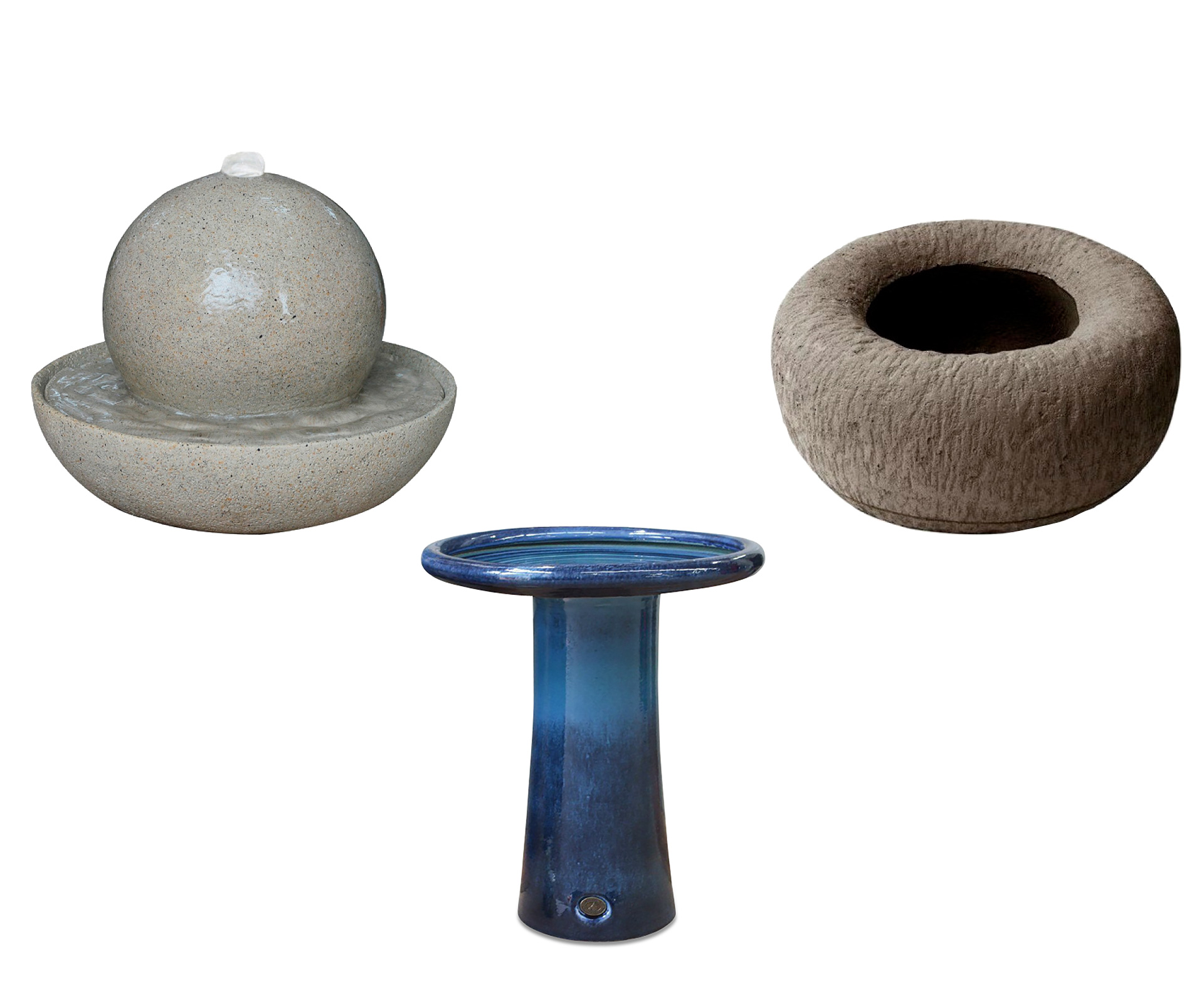
L to R: Water Magic Sango fountain, $65, from Bunnings. Birdbath, $330, from Morris & James. Adwater Tsukubai fountain, $220, from Stone & Water World.
Words by: Carol Bucknell. Photography by: Bauer Syndication, Getty Images.
EXPERT PROJECTS

Create the home of your dreams with Shop Your Home and Garden
SHOP NOW











